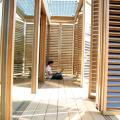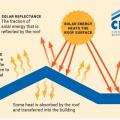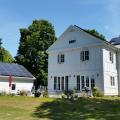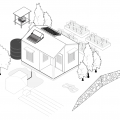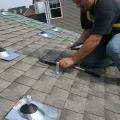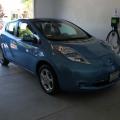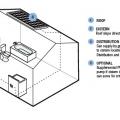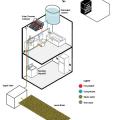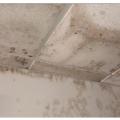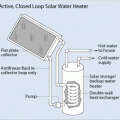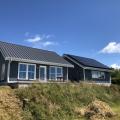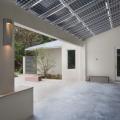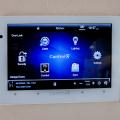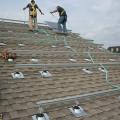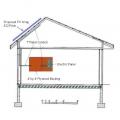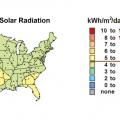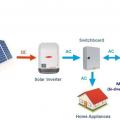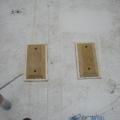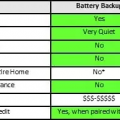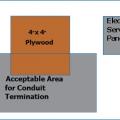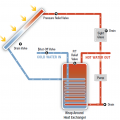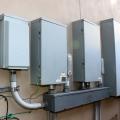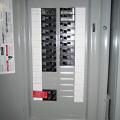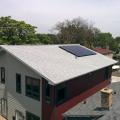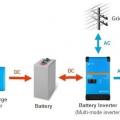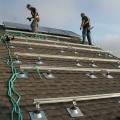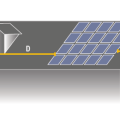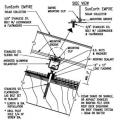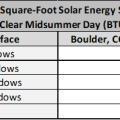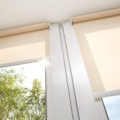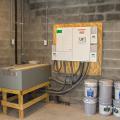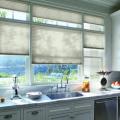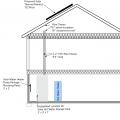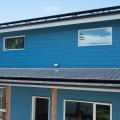Showing results 1 - 50 of 141
These folding louvered porch doors provide effective shade from low-angle east and west sunlight and can open for views; the photovoltaic panels overhead allow in filtered natural light
A cool roof utilizes materials with high solar reflectance and thermal emittance to reflect solar energy and reduce heat gain to the home
A detached garage offers more space to place solar panels with likely fewer roof penetrations and more options for roof pitch and orientation.
A resilient home with storm shutters, a sump pump that drains to a french drain, rainwater collection, solar thermal and PV, and raised garden beds.
A roof-mounted solar electric system can be sized to produce enough electricity to power the home and an electric car.
A self-sufficient water system for a home could include a rooftop cistern and solar thermal water heater.
A solar tube provides more natural light while maintaining privacy for this bathroom.
A thermosiphon solar hot water system heats a fluid in the solar collector; the heated fluid heats potable water in a roof top tank.
A waterproof layer of thermoplastic olefin is laid down before installing the solar panels.
All vents are routed to gable walls and eaves rather than through the roof to minimize the risk of leaks and provide an uninterrupted plane for PV panels.
An array of 13.4 kW of solar panels form a waterproof roof for this porch that allows 15% of sunlight to filter through while the dual-surface panels produce power from the top and from any sunlight reflected up onto their lower surface.
An energy monitoring system helps the homeowners track energy usage and solar power production.
An interior shade that closes from the bottom up can work in conjunction with an exterior overhang to block lower-angle sunlight while still allowing view through the upper portion of the window that is shaded by the overhang.
Basic layout diagram of an AC-coupled solar battery system with a Grid-tied (hybrid) setup
Blocking installed on a flat roof for a PV system rack is sealed around the edges with sealant then will be covered with self-adhering roof membrane to prevent water leakage
Charts showing percentage of solar energy available in each US region as tilt and azimuth change
Durable Energy Builders installed a natural gas generator integrated with the solar electric system via a “smart panel” so that household utilities automatically switch to the generator during power outages in the disaster-resilient home.
ENERGY STAR reflective shingles cover the roof, which is ideally angled for solar panels.
Example of a basic layout for a DC-coupled off-grid solar battery system using a MPPT solar charge controller
Exterior shading devices such as these Bahama shutters can significantly increase the hours of safety provided by a home during an extreme heat event.
For houses with solar photovoltaic roof panels, any potential shading structure should be twice as far away from the photovoltaic array as it is tall.
In midsummer, the roof and skylights will receive much more solar radiation per square foot than an unshaded east- or west-facing wall, which in turn will receive more solar energy than north- or south-facing walls
Interior window attachments such as these light-filtering roller shades can reduce heat gains while providing pleasant, diffuse natural light.
Light colors have been used on exterior walls and roofs to keep buildings cooler in hot climates for centuries, as shown by this traditional building in Morocco, built in the early 1800s
Lithium-ion batteries charged by the solar photovoltaic panels provide 200 amperes of standby electricity to critical circuits in case of power failure due to severe weather conditions.
Metal cap flashing is installed over the roof parapet and extends down over the roofing membrane
Murphy Brothers installed a 4.5-kW photovoltaic system using solar electric shingles that integrate into the roof for a lower profile than raised panels on the DOE Zero Energy Ready Home.
Permanent options for keeping sun off windows to minimize solar heat gain include permanent overhangs and awnings, frames, and louvers.
Pleated blinds provide cooling savings in summer by blocking and reflecting sunlight, while allowing some diffuse daylight to pass through.
Power production from the Integrated solar shingles helps cut electric bills to $71 a month for this home in North Carolina.
